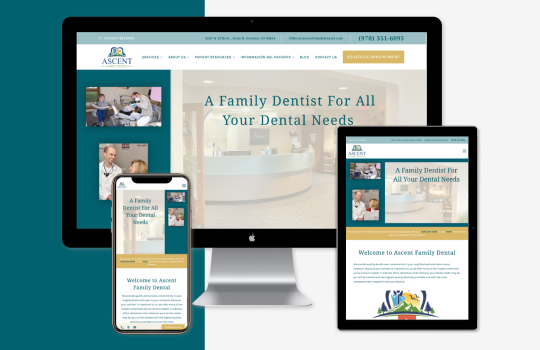
Patients seeking aesthetic treatments have an abundance of choices. The research and decision-making process now takes place online, where beauty bloggers and medical professionals find themselves competing in the same arena.
These are the circumstances into which plastic surgery clinics must venture in order to attract new patients. Practices that take online marketing seriously can seize a huge competitive advantage.
Each Specialty is Unique!
Key elements of successful plastic surgery marketing
Online marketing may seem like a daunting task, but the alternative is to miss out on educating and attracting prospective patients.
When plastic surgeons reach patients early in their journey, they can establish trust and help empower better decisions about their treatment options
Create a beautifully designed, search-optimized website
Prominence in organic search results is the most cost-effective way to bring qualified patients to your plastic surgery website. Your website is your first chance to make the best possible impression with prospective patients.
Acquire patient reviews
There’s no advertisement better than a glowing patient review. Reputation is the currency of the plastic surgery industry, and a smart plastic surgery marketing strategy prioritizes collecting patient feedback
Purchase paid search advertising
Build a strong social media presence
Master video marketing
A beautifully designed, search-optimized website
In a typical month, 110,000 Google searches are made for the phrase [plastic surgery]. This doesn’t include searches for specific plastic surgery procedures and the unlimited potential of tapping into organic traffic from broader beauty-related searches.
Website keywords like [rhinoplasty] are too competitive for most plastic surgery clinics to rank highly in search. But, by combining keywords with a specific geographical location — i.e. [rhinoplasty beverly hills] — keywords can become opportunities for cost-effective patient acquisition. Having a dedicated page for each service you offer is a great way to increase organic traffic.
Bringing prospective patients to your website is just the beginning. To increase the chance they’ll take the next step, make sure your website is:
- Beautiful and reflective of your patients’ lifestyle aspirations.
- Mobile-responsive. About 60 percent of searches now come from mobile devices. Visitors who become frustrated by a mobile experience tend to go to competitors.
- Full of great photography. Pictures of your plastic surgeons and staff are crucial to establish trust. Before-and-after photos showing patients results help your website visitors see results from procedures they’re considering.
- Built for performance, Website images need to be sized appropriately to ensure they load quickly, so visitors get the best experience.
Strategic paid search advertising
Nothing beats being placed at the top of search engine results pages (SERPs) for the terms your prospective patients search for online.
Paid search ads are a type of advertising that involves paying Google or other search engines a fixed rate each time your ad link is clicked. The key to getting value out of your investment is to make every click count, by putting thought into:
- Your ad copy. Your ad must attract viable patients, not irrelevant clicks.
- The best keywords. Bid on keywords that balance cost with potential.
- A compelling landing page. Your landing page must have great content that leads your prospect to take further action.
A strong social media presence
Social media is important to cosmetic surgery marketing because it increases your online footprint. As a result, more patients are likely to find your plastic surgery clinic. Social media also gives prospective patients a closer look at what they can expect before walking through your doors. Conversations on social media often help alleviate concerns about a procedure and its impact on a patient’s health or appearance.
Opt for a strong presence on the social networks where your patients are most active. For some practices, that means focusing on platforms like Instagram. Any visual sites like Facebook, YouTube, Snapchat, and TikTok also have a role to play.
Build a widespread social media presence and engage with people on each network. Stories are now a key feature on Facebook, Instagram, and Snapchat, and offer a unique way to share patient testimonials or explain specific treatments and procedures. Posting frequently, ideally with the help of an editorial calendar, will go a long way to keeping you top-of-mind for prospective patients.
A sound video marketing strategy
For first-time plastic surgery patients, choosing a doctor can be a life-changing moment. You can help them feel more comfortable selecting your practice by incorporating video into your plastic surgery marketing.
Videos are the most engaging form of content on social platforms, and they’re especially helpful in plastic surgery marketing due to the importance of trust and relationship-building between patients and staff. Help prospective patients visualize their future experience by showing the facility, staff, and satisfied patients.
Some video marketing best practices include:
- Ensure audio is an enhancement. (not a necessity for viewers to see it). Your video needs to grab the attention of casual social media scrollers.
- Be succinct. Each video should have a clear, simple message.
- Optimize for mobile. Host video content on a responsive platform like YouTube or Vimeo, and don’t use small text.
- Lead to the next step. For each video, include a call-to-action that prompts people to take the next step.
- Use optimal video lengths. Research from Hubspot suggests the ideal video length is 30 seconds for Instagram, 45 seconds for Twitter, one minute for Facebook, and two minutes for YouTube.
Traditional tactics in plastic surgery marketing
In the modern marketing world, digital is king. But businesses that rely on making their patients feel comfortable cannot afford to forget about their brand offline. Plastic surgery clinics are the quintessential example here.
Your in-office experience must meet and reinforce the expectations established online and help prospective patients feel welcome.
Magazines in the beauty niche are a good choice for highly targeted cosmetic surgery advertising. Radio — and its younger digital cousin, podcasting — are superb ways to add to your visual campaigns. Direct mail can also give your practice more visibility and add to your overall brand experience.
These methods are not as readily measurable as online marketing, but they offer an opportunity to reach prospective patients through other channels, and complement your online marketing.
Plastic surgery marketing must be HIPAA-compliant
All healthcare providers must ensure their patients’ personally identifiable information is protected and used responsibly. Plastic surgery marketing must comply with the Health Insurance Portability and Accountability Act of 1996 (HIPAA).
A few reminders:
- Sharing a patient’s name, nickname, or geographic information (more specific than state) is strictly forbidden without the patient’s prior written consent.
- Important numbers (telephone, social security, medical record, etc.) and specific dates (birth, death, admission, discharge, or age) are protected.
- Patients’ photographs (even of an arm or leg), voice recordings, and fingerprints are also protected.
- When engaging with people on social media, do not confirm that a commenter is a patient, even if they talk about their experience with your practice.
- Never share information from a patient’s record with them on social media or other unsecure networks like Facebook Messenger.
- Never include protected health information (anything related to health status, provision of healthcare, or payment for healthcare) when processing or uploading data to targetting or remarketing platforms.





